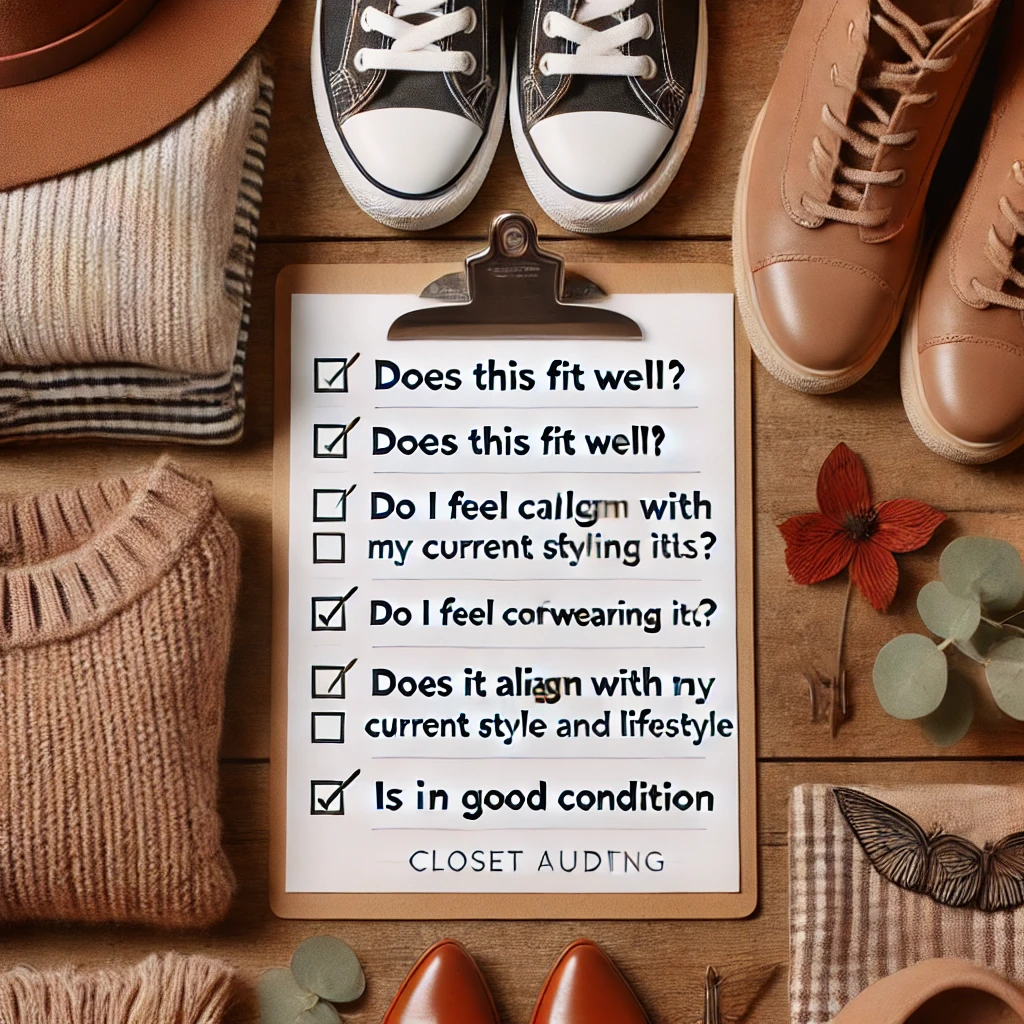This year, I decided to audit my closet. Closet auditing involves assessing the items you own to determine what aligns with your current lifestyle, style preferences, and wardrobe goals. It’s a helpful process for clearing out clutter, uncovering hidden gems, and pinpointing any missing pieces that need to be added. Here are the steps I plan to follow:
Step 1: Create a Checklist
Before creating a checklist, I carefully examined my closet and took photos to get a clear idea of what I was working with. Next, I used my notebook to list the items in my closet, organizing them based on their locations. For instance, I noted that the second shelf on the left holds towels and lotions, while the third shelf contains blouses and a few blazers. Once everything was written down, I transferred the information to an Excel spreadsheet for better organization.

Step 2: Remove Everything at Once or Tackle One Section at a Time
When auditing your closet, you can choose to tackle everything at once or focus on one section at a time, depending on your schedule and comfort level. Taking everything out at once gives you a complete view of your wardrobe, making it easier to assess the overall condition, spot duplicates, and identify missing essentials. However, if the thought of pulling everything out feels overwhelming, working on smaller sections—like tops one day and shoes the next—can make the process more manageable and less time-consuming. Both approaches can be effective, it is about choosing the one that works best for you to ensure a thorough and stress-free closet audit.
Step 3: Ask Questions

As a software tester, I often hear the phrase “Ask the right questions,” and I apply this mindset when auditing my closet. For each item, I ask: Does it fit well? Do I feel confident wearing it? Does it suit my current style and lifestyle? If the answer is no, I let it go. Items in good condition but no longer useful to me get donated, sold, or repurposed. I include these questions in my checklist as part of the first step in the auditing process.
Step 4: Organize and Prioritize
Once you’ve decided what to keep, reorganize your closet to improve its functionality. Group similar items together, such as putting all blouses in one section and pants in another. Use dividers or bins for accessories like belts and scarves. This setup helps me easily access everything, making getting dressed less stressful. I prefer to keep frequently worn items at eye level and store less-used pieces on higher or lower shelves for easy reach.
Step 5: Identify Gaps and Plan Wisely
Declutter and organize your closet to easily spot any missing items. You might find you need a classic blazer, comfortable shoes, or versatile neutral basics. Make a shopping list of these essentials and focus on adding high-quality, adaptable pieces to your wardrobe, whether from thrift stores or non-thrift options. Regularly auditing your closet keeps your wardrobe fresh and functional.
Conclusion
Closet auditing is more than just removing items; it’s a reflective process that helps gain insight of your wardrobe. It saves time and ensures that the items you have serve a purpose whether for work, casual outings, or special occasions.

